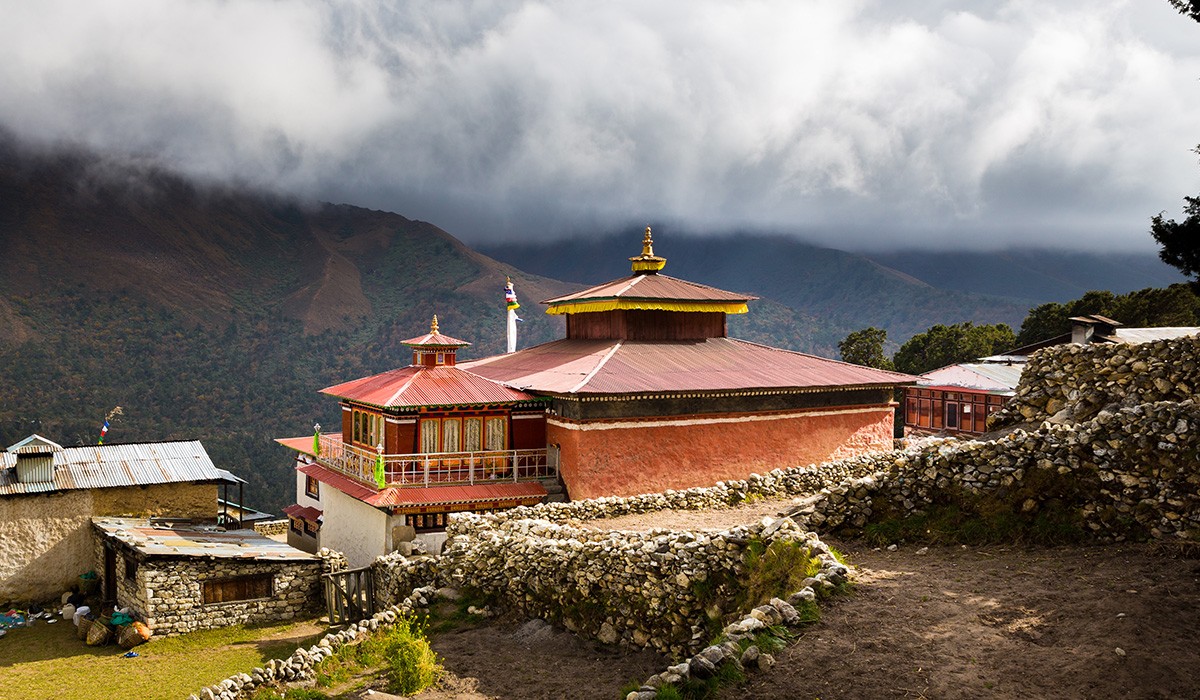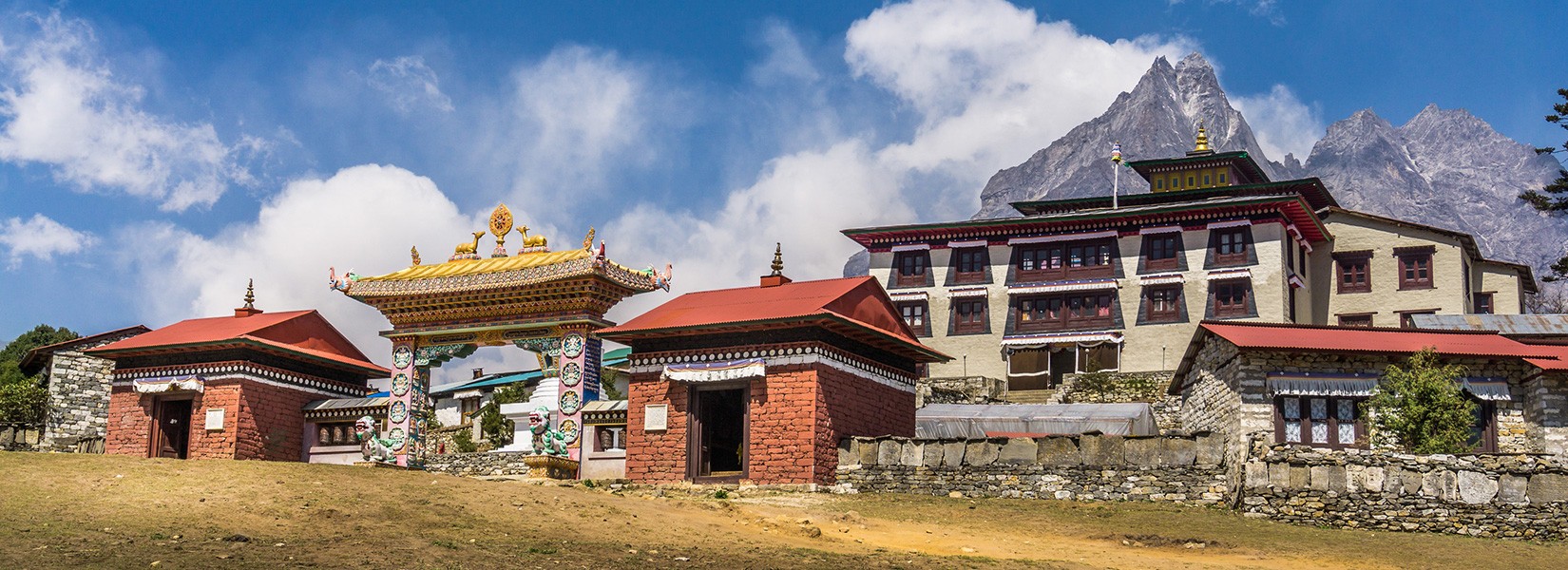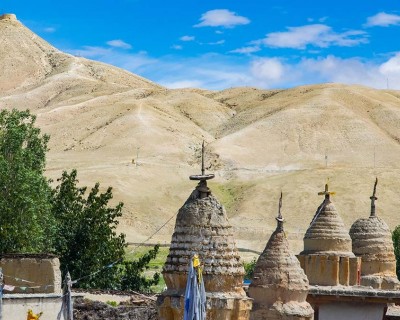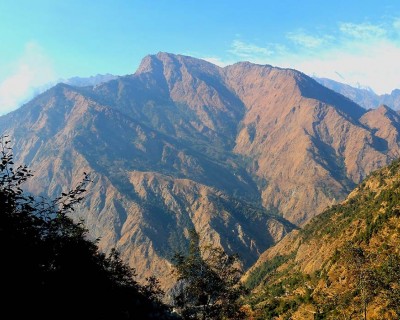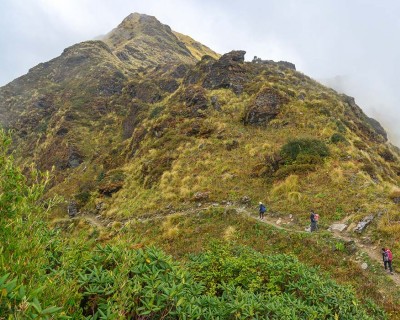Phakding Monastery
Phakding Monastery, also locally known as Rimishung Monastery, is a small but culturally significant site located in the Phakding Village. This monastery, which is located along this mainstream route, is the first monasteries on Everest Base Camp trek that the adventures come face-to-face with. This spiritual site nestles on the lush green hills and at the bank of cascading Dudh Koshi River. Phakding Monastery ‘Rimishung Monastery’ is also part of the Nyingma School of Tibetan Buddhism which is known for its peaceful ambiance and spiritually enchanting vibrance. This beautiful spiritual landmark reflects the Buddhist heritage of the Sherpa communities with its prayer wheels, intricate murals, colorful flags, religious figures and antiquities.
The courtyard of Phakding Monastery also hosts several cultural events like Dumje Puja, masked dance and offerings. Here, the chanting of monks and spinning of the prayer wheels in the monastery offer moments of peace to explorers before continuing with their challenging journey. If you are interested, the resident monks will also let you participate in their daily puja and you can also join the guided meditation sessions to be more connected with your inner self.
Namche Monastery
Namche Monastery is situated in the bustling Sherpa capital of Namche Bazaar. This vibrant Sherpa town was an ancient salt trade route between Nepal and Tibet. Namche Monastery, the spiritual monument of this vibrant town, offers a peaceful retreat amidst the energetic atmosphere of this bustling mountain town. This monastery is believed to be more than 300 years old and is used for different ceremonies and rituals by the locals. Namche Monastery has a modest design and is decorated with monuments of a variety of gods. It has prayer wheels, colorful murals and the statue of Guru Rinpoche, who is a prominent figure in Tibetan Buddhism.
This place of reverence under the bustling ambiance of Namche serves as a center for prayers, meditation and Tibetan Buddhist teachings that attracts both locals and trekkers. Trekkers taking the mainstream Everest Base Camp Trek route often take time to explore the Namche Monastery during the acclimatization day to learn more about the Sherpa culture, traditions and way of life. The chants of monks, fluttering prayer flags and the aroma of incense create a tranquil environment that contrasts with the lively bazaar of Namche.
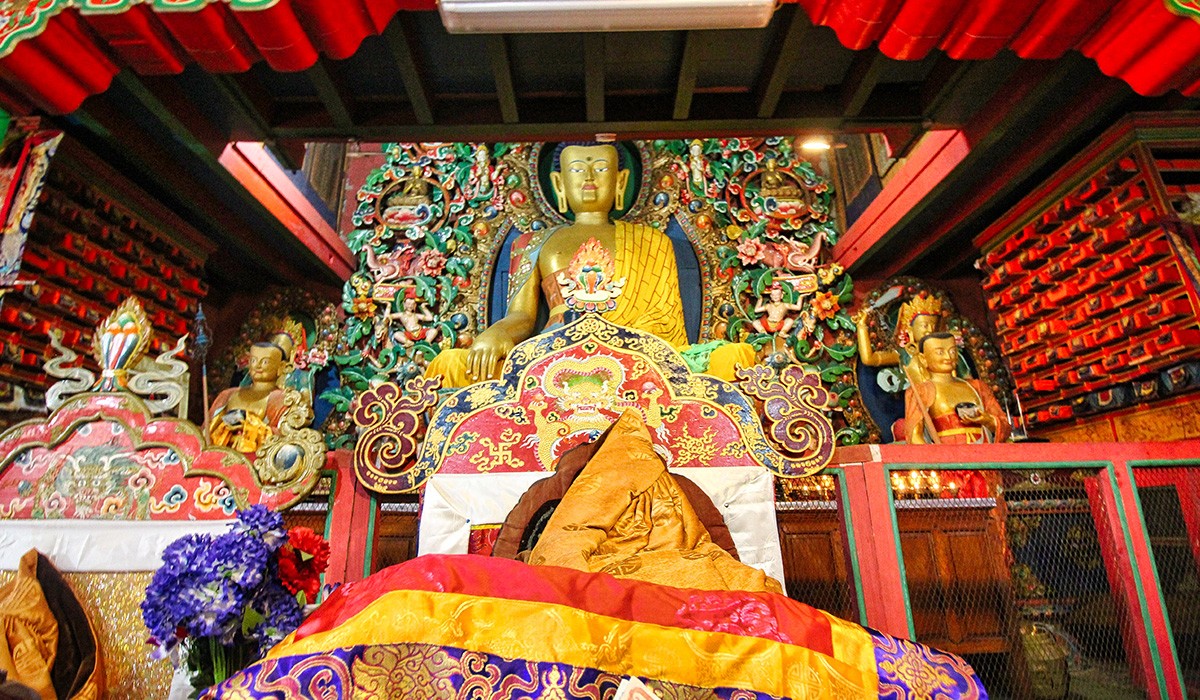
Khumjung Monastery
Khumjung Monastery is another popular monasteries on Everest Base Camp Trek that is situated at an elevation of 3,790 meters (12,434 feet). This monastery is definitely worth the visit during your trekking adventure in the Everest region. Besides its spiritual significance, this monastery is also linked to the legendary mountain folktale. An ancient relic that is believed to be of the famous abominable snowman ‘Yeti’ is stored here. The scalp of the mythical mountain creature has drawn the curiosity of trekkers and researchers from all over the world. The Khumjung Village is believed to have been built around 340 years ago at the basin of the holy peak Khumbila. Then, Khumjung Monastery was built within the village to protect the villages and ward off the evil spirit.
Guru Rinpoche and his consorts are the major attractions of this monastery. This monastery is also associated with the Nyingma School of Tibetan Buddhism and is known for its spiritual and cultural significance. The prayer halls of Khumjung Monastery are adorned with colorful murals, religious monuments and scriptures that are a testament to Buddhist teaching. Big celebrations take place in this monastery during the festival like Dumji and Mani Rimdu. Khumjung is surrounded by enchanting landscapes with epic views of mountains on the backdrop, which enhances the monastery’s serene ambiance, making it an ideal place for admiring the natural and cultural highlight of the region.
Khunde Monastery
Khunde Monastery is another major spiritual monasteries on Everest Base Camp Trek that is situated in the Khunde Village. At an altitude of 3,840 meters (12,600 feet), this monastery is a cherished spiritual hub of the Sherpa communities in the Everest region. This monastery is part of the twin villages Khumjung and Khunde, which are known for their traditional lifestyle, authentic Sherpa culture and the breathtaking Himalayan panorama. Khunde Monastery has a modest design and features traditional Sherpa architecture that is adorned with vibrant prayer flags that start fluttering from the afternoon. As for its interior, the monastery houses religious artifacts, ancient sculptures and murals that depict the Tibetan Buddhist teachings.
For pilgrims and visitors, Khunde Monastery offers an opportunity to experience the soothing ambiance of spiritual and cultural richness of the Everest region. The soothing vibrance of the monastery, prayer chants and fragrant aroma of incense create a magical atmosphere that resonates with the true essence of the Himalayas. Thus, the cultural and spiritual prospects and serene atmosphere couple with the stunning views of the Himalayan peaks make Khunde Monastery a memorable stop enroute to Everest Base Camp.
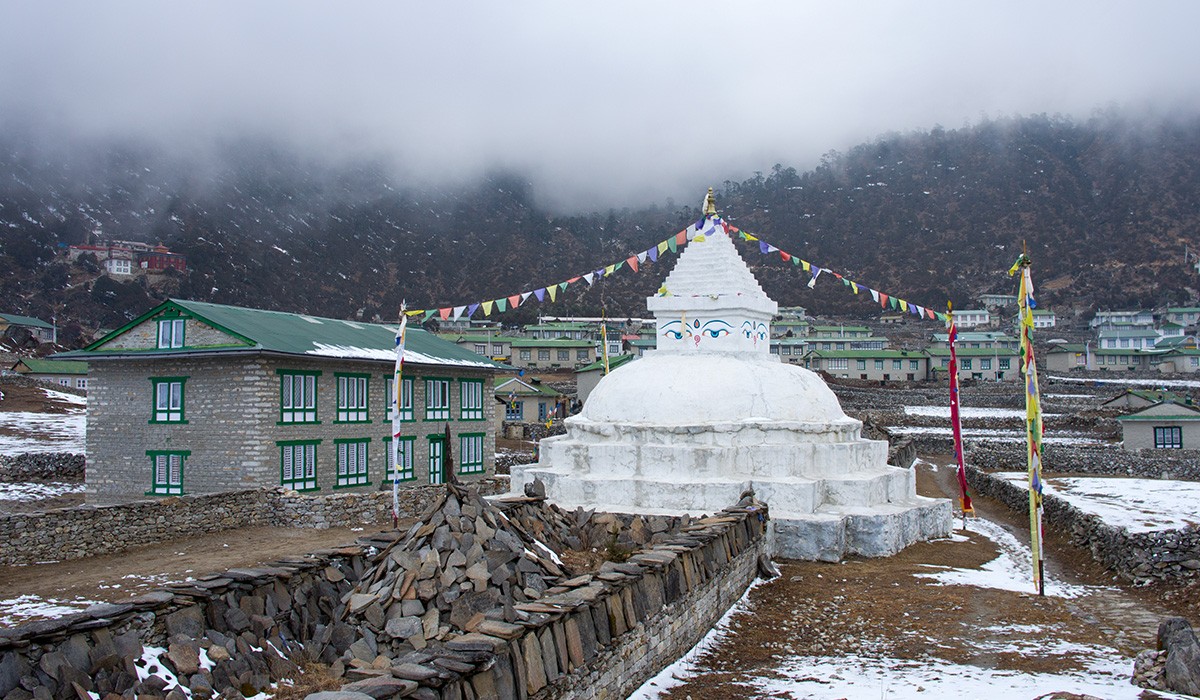
Thame Monastery
Thame Monastery, also known as Dechen Chokhorling Monastery, is one of the oldest and most significant spiritual hubs in the Khumbu region. This monastery is situated at an altitude of 3,800 meters (12,467 feet), perched in the hills with stunning views of towering peaks on the backdrop. The origin story of Thame Monastery dates back 300 years and it was founded by Lama Sangwa Dorje. This monastery has four guardians, a circle of life, and harmonic buddies who reside on top of the elephant. There is also the Vajrapani Wheel, which is a big prayer wheel that is believed to send the prayers of the worshippers to the heavens. This monastery is famous for its annual celebration of Mani Rimdu. During May, this monastery is reserved for the grand Thame Mani Rimdu celebration.
It is a three-day celebration where monks perform masked dances, rituals, and praying ceremonies. If you happen to be exploring this route during May, witnessing this grand celebration will offer a unique cultural experience that reflects the spiritual vibrancy of the Sherpa communities. Thame Monastery also serves as a spiritual retreat for those who are seeking solitude and enlightenment on the lap of the Himalayas. Its majestic scenery surrounded by snow-clad peaks, peaceful ambiance and the rhythmic chants of the monks create an otherworldly experience for the visitors.
Tengboche Monastery
Tengboche Monastery is one of the major spiritual highlights in the Khumbu region. This monastery, which is also referred to as Dawa Choling Gompa is Khumbu Valley’s largest monastery. This beautiful monastery is perched majestically at an altitude of 3,867 meters (12,687 feet) and is the key cultural and religious center for the people of the Sherpa communities. Its location, which is surrounded by majestic snow-clad wonders like Everest, Lhotse and Ama Dablam, offers a serene environment for worshipping and meditation. Tengboche Monastery was one of the first monasteries built in the region. The building process was started by Lama Gulu in 1916 and took three years to be completed.
The architecture of this monatery is a blend of traditional Tibetan Buddhism and Sherpa designs. Inside the monastery, visitors can admire the intricate murals, a large statue of Guru Rinpoche and other scared relics and monuments. Tengboche Monastery is also a center for the famous annual celebration of the Mani Rimdu festival. This celebration at the monastery attracts locals and trekkers, offering a vivid glimpse into Tibetan Buddhist culture and traditions. Visitors of the region take a break here to soak in the spiritual atmosphere and offer their prayers for a safe return before moving forward with their challenging journey.
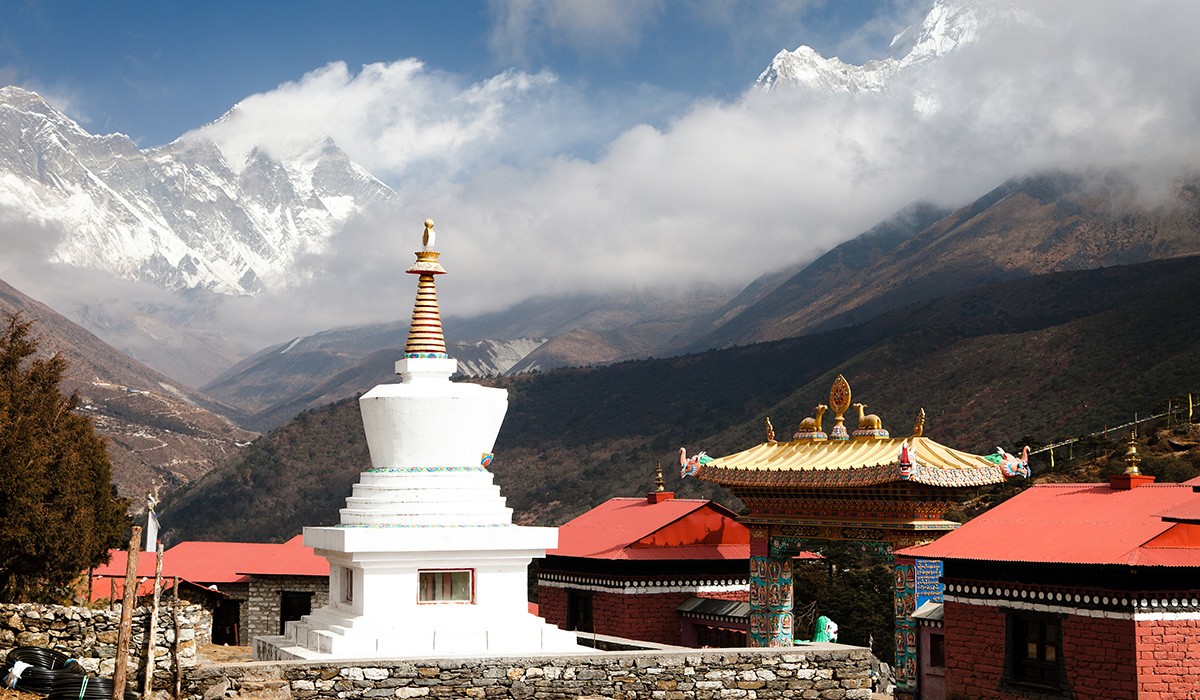
Pangboche Monastery
Pangboche Village, which is a traditional settlement at an elevation of 3,985 meters (13,074 feet), is home to one of the oldest monasteries on Everest Base Camp Trek. Pangboche Monastery is over 350 years old and is the oldest monastery in the Khumbu region. This monastery was built by Lama Sangwa Dorjee and this gompa also once stored the scalp of the abominable snowman yeti. It was kept in the storage area of the monastery from where it was stolen. There are about 20 monks that reside in the monastery and they perform the daily worshipping rituals, keeping the ancient traditions alive.
This century-old monastery also houses ancient relics, artifacts, murals and religious statues that offer deeper insights on into the Tibetan Buddhist culture, art and philosophy. Pangboche Monastery also plays a role in the spiritual lives of the Sherpa communities as it is a venue for ceremonies, festivals and meditation. Travelers visiting the monastery are also allowed to witness the monks performing the daily ritual and learn about the history, traditions and legends associated with the spiritual hub.
Thaktul Monastery
Thaktul Monastery located in the picturesque Khumbu Valley is one of the lesser known monasteries on Everest Base Camp Trek. This monastery is situated in Thak Khola Valley and is one of the oldest and major monasteries in the region. Thaktul Monastery was built by Tibetan monk Lama Sangye Gyaltsen at the request of the Malla king, who wanted to spread Buddhism in Nepal during the 1,400s. The monastery is perched on top of the hill, which offers a stunning panorama of the Thak Khola Valley and the surrounding peaks. Thaktul Monastery’s premises house the main monastery, library and several smaller shrines.
This beautiful monastery is renowned for its unique architectural design, which perfectly harmonizes with the scenic natural beauty of the surroundings. Inside the monastery visitors can find traditional Tibetan Buddhist artifacts, prayer wheels, sacred scriptures and monuments of the Buddhist deities. The monks residing at this monastery engage in daily rituals and ceremonies that follow the decree of mindfulness and compassion. During the Buddhist festival, locals and visitors participate in elaborate celebrations and offer prayers in front of the deities.
Pema Namding Monastery
Pema Namding is a beautiful monastery in the Ghat Village, which was built by Ngawang Jigdral Rinpoche. This monastery is relatively new and the name for the monastery was given by Trulsik Rinpoche of Thuptne Chholing Monastery. Even if it is in addition to the Himalayan spirituality, the monastery is already popular among the locals and travelers due to its peaceful atmosphere, building architecture and stunning views of the mountain on the backdrop. Pema Namding Monastery is dedicated to Tibetan Buddhism teaching, compassion, wisdom and spiritual growth.
The interior of the monastery is decorated with traditional Buddhist artifacts, sculptures, thangkas, statues of deities and prayer wheels. There is also a figure of Buddha that is believed to be over 1,000 years old. Visitors of the Pema Namding Monastery can experience the serenity and spirituality of the Himalayas. This spiritual hub serves as an introspection space that allows travelers to pause and soak in the peaceful atmosphere in a perfect picturesque setting, making it a memorable stop along the trail.
Drepung Monastery
Deprung Monastery is one of the oldest monasteries on Everest Base Camp Trek. This monastery was built by Jamyang Choge Tashi Palden, one of the Tsongkhapa’s most important followers. He opened the monastery in 1416 and it was named after Shridhanyakataka, a sacred site in South India. The Gelugpa School was also based in Drepung and it was also part of one of four great Gelugpa holy sites. Dalai Lama lived in the monastery before the Fifth Great Dalai lama built Potala, Ganden Phodrang. This monastery is also referred to as Nalanda of India, which is a major Buddhist monastery known for having high academic standards for the students.
This holy site in the Himalayas is still a popular hub for Buddhist pilgrims and students to come pray and learn about the teachings. Drepung Monastery runs classes at school on subjects such as standard Buddhist studies, meditation, Tibetan culture and language. Travelers visiting this monastery can gain insights on the influence of the Tibetan Buddhism on the local culture and sprituality.
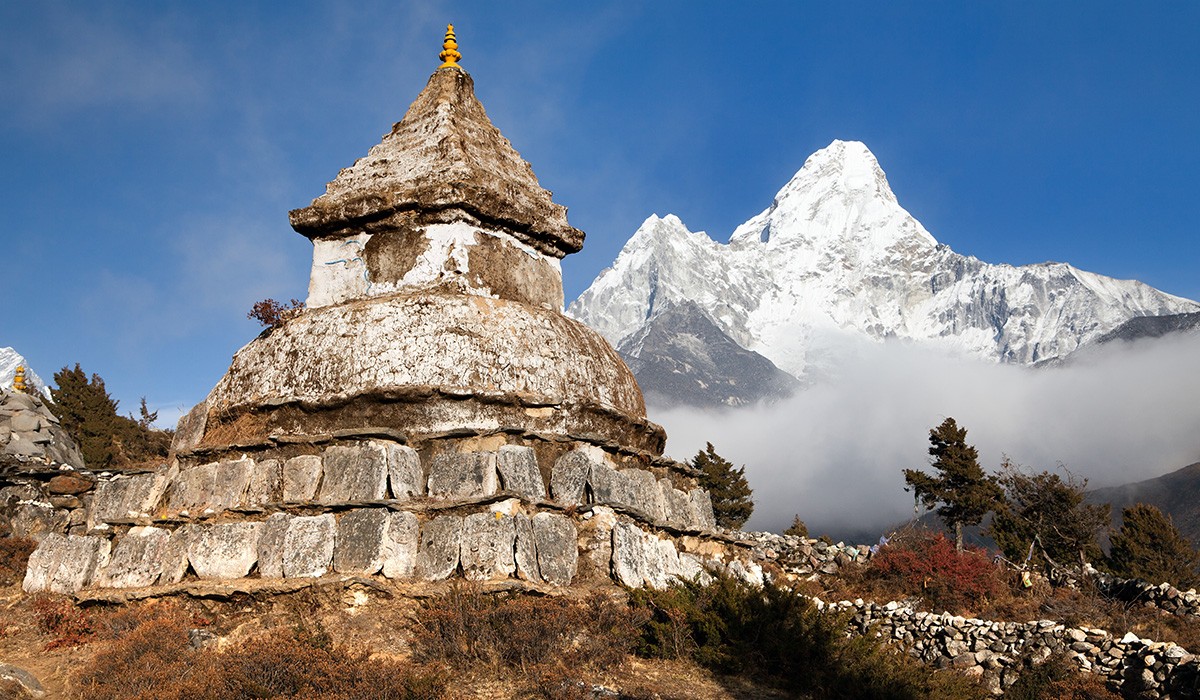
Mende Monastery
Mende Monastery is one of the iconic monasteries on Everest Base Camp Trek that is secluded in a location away from the mainstream trekking route. Thus, this monastery offers an ideal environment for meditation and getting in touch with spirituality under the picturesque ambiance. Mende Monastery is perched on the hillside above the Mende Village and was built by Lama Zopa Rinpoche, a well-known Nyingma Guru in the 17th century. After its establishment, the Mende Monastery became a popular hub for the study and practice of Tibetan Buddhism. This monastery is home to over a hundred monks and students from across the globe who have vowed to embrace the lifestyle and keep the traditions alive that have been passed down for centuries.
Visitors can also join the meditation session inside the monastery and learn more about the Buddhist philosophies that prioritize self-awareness and peace. Mende Monastery is a lesser-visited gem that offers a unique experience to trekkers interested in exploring the spiritual side of the Everest region in a serene environment. Its cultural and spiritual significance in the more tranquil and isolated part of the region makes it an enriching addition to the Himalayan journey.
